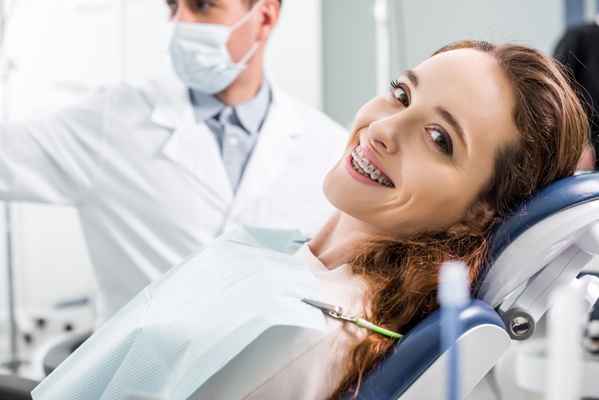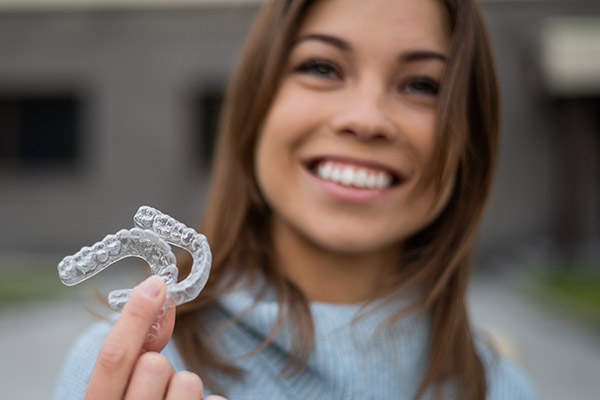A Guide to Adult Orthodontics: Enhancing Your Smile at Any Age

Adult orthodontics can effectively straighten the teeth. Whether they have shifted out of place over time or the misalignment has been a long-standing issue, an orthodontist has several options for patients to choose from. Here is how adult orthodontics can enhance your smile no matter your age.
An overview of adult orthodontics
Adult orthodontics uses traditional and innovative approaches to teeth straightening. It can be effective for adult patients of all ages, whether in their 20s, 30s, 40s, or beyond. Patients can qualify even if they have not had orthodontic treatment before.
Additionally, adult orthodontics can help patients who have had braces or aligners when they were younger but whose teeth have since shifted. This typically occurs as a result of not wearing a retainer enough in the years following treatment. However, the teeth can also shift as the jawbone changes or shrinks with age. Other potential causes of misalignment in adulthood include gum disease, teeth grinding (bruxism), and general wear and tear.
Adult orthodontics treatment methods
Adult orthodontics can be categorized into two main types: braces and aligners. While both have similar treatment times, aligners are generally faster. On the other hand, braces are the better option for more severe cases. Take a closer look:
Adult braces
Traditional metal braces
The most common type of adult braces is traditional metal braces, which use metal wires anchored by brackets on the fronts of the teeth to shift them. An orthodontist periodically tightens the wire, or archwire, to manipulate the teeth into their proper positions. As per the American Association of Orthodontists, elastics may be incorporated into treatment to put additional pressure on the teeth for optimal smile realignment.
Ceramic braces
Ceramic braces work in the same way as traditional metal braces, but they use thin wires and clear ceramic color-matched to the patient’s teeth. This provides a more discreet orthodontic treatment, without compromising efficacy.
Lingual braces
Another discreet type of adult braces is lingual braces, which sit on the backs of the teeth. Like traditional braces, they also use metal brackets and wires.
Clear aligners
Straightening teeth does not always require brackets or wires. An orthodontist may recommend using a series of clear, custom-made plastic aligner trays to shift the teeth. These trays are considered more comfortable and adaptable than adult braces because they can be removed as needed (such as for eating) and fit snugly in the mouth.
Clear aligners are an adult orthodontic treatment best suited to patients with mild to moderate bite issues. To experience the full effect, patients must wear the aligners for at least 20 to 22 hours a day.
When to consider adult orthodontics
For most patients, deciding to finally try adult orthodontics is a matter of cosmetic preference. That said, orthodontic treatment has oral health benefits in addition to the cosmetic treatment. It makes the teeth and gums easier to clean, preventing tooth decay and gum disease. Additionally, it realigns the jaw, which can ease wear and tear from bruxism. It can also help with speech difficulties stemming from misaligned teeth.
Despite all the benefits, it can be difficult to tell if one should take the leap and commit to treatment. Consulting an orthodontist and learning about one’s options can help make that decision easier. Below are common signs that a patient may benefit from a consultation:
Bite issues
It is common for dental providers to recommend adult orthodontics due to bite issues. Often, patients do not notice they have a bite issue until told. That does not mean bite issues are only cosmetic issues. They can lead to a weaker bite and cause chewing problems, mouth breathing, and speech difficulties. Further, since bite issues stem from a misaligned jaw, they can cause temporomandibular joint (TMJ) dysfunction and symptoms such as jaw pain and popping.
Thankfully, adult orthodontics can correct several bite issues. The most common is when the upper jaw protrudes past the lower jaw (overbite) and vice versa (underbite). Another example is an open bite, which is when a significant gap remains between the upper and lower teeth despite biting down.
Crooked, crowded, and gapped teeth
Patients tend to consider adult orthodontics because they have noticed crooked teeth, crowding, or gaps in their smiles. These types of issues can often be corrected with aligners. However, if the misalignment is severe, adult braces are likely the more appropriate option simply because the orthodontist will need to move the jaw around more.
Discover more about adult orthodontics
Interested in adult orthodontics? To learn more about your options, contact Precision Orthodontics & Pediatric Dentistry. We can schedule an appointment to begin the path toward the treatment you need.
Request an appointment here: https://www.orthodonticprecision.com or call Precision Orthodontics & Pediatric Dentistry at (703) 391-8800 for an appointment in our Reston office.
Check out what others are saying about our dental services on Yelp: Orthodontics for Adults in Reston, VA.
Recent Posts
Metal braces have been used to straighten teeth for over a century and remain an efficient way to straighten teeth. These oral appliances work by applying constant pressure on your teeth, slowly improving their alignment over 12 to 36 months. The appliance is fixed in your mouth after a dentist installs it, and it stays…
Like braces, clear aligner treatment can successfully straighten teeth and correct bite problems. Braces were the most popular and available choice for many years, but aligners are more common today than ever. If you are unhappy with the way your smile looks, aligners can be effective. Understanding how aligners work and what the process is…
As you prepare to get braces and start wearing them, you may be a little nervous. It can take some time to get used to this treatment. You will encounter some challenges, but the result can help you achieve your goals. During the process, you need to be diligent about caring for your braces. This…
A kids dental specialist is a type of dentist who focuses on seeing children and helping them with the needs unique to their developing dentition. Parents may wonder whether seeing a dentist specializing in kids is essential or if they can just see the same dentist the adults in the family trust.While a general dentist…


